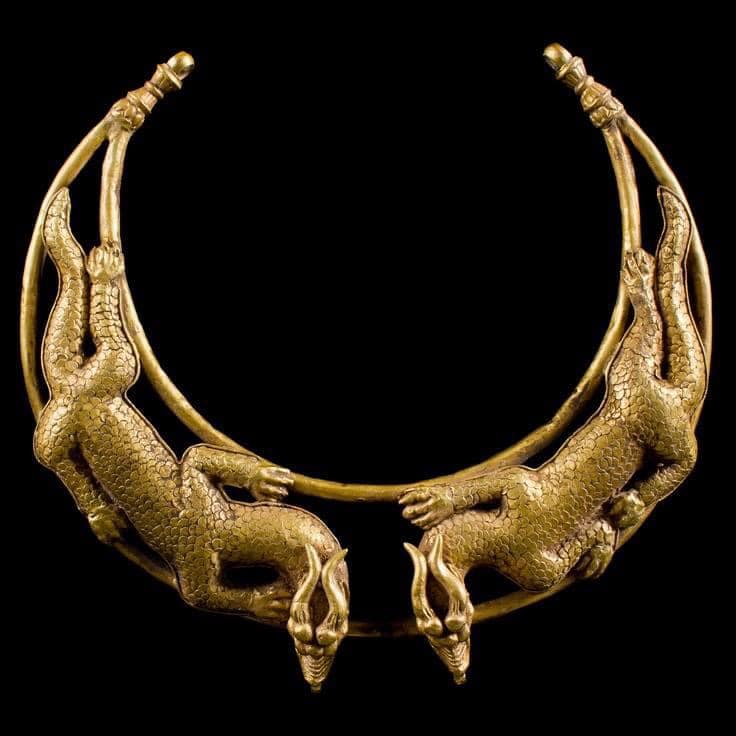Scythian Gold Double Dragon
Są Serbowie i Chorwaci, a to oznacza że są Harowie (Harharowie) i Sarmaci (Serbo-Mazowie) bo Serbowie Wielcy / Biali to Mazowsze, Wielkopolska i Łużyce (dzisiaj widzialne jako Niemcy), a Chorwaci Biali / Wielcy to Małopolska rozumiana jako Zachodnia (dzisiaj polska i czesko-morawsko-słowacka) i Wschodnia (dzisiaj ukraińska i mołdawska / wołoska – w-lachicka; dzisiaj widzialna jako Rumunia). W sumie do tego wszystkiego warto byłoby dodać, że osadnictwo słowiano-scyto-sarmackie w tych regionach Europy i nad Morzem Czarnym to okres już od 5.500 lat p.n.e. lekko licząc.
Scythian Gold Double Dragon Torc Necklace from Central Asia (200 BC).
The Dispersian of the Scythian Dragons
„After extending their country Scythia into more western lands beyond the Black Sea, many Scythians migrated into Europe and the Middle Eastern lands as far as Egypt while leaving new Dragon Families and Courts in their wake. The various tribes of Scythians included the Royal Scythians as well as the Ossetians, Pashtuns, Sarmatians, Kazakhs and Yakuts. Once in Europe, these Scythian tribes spread over much of their new continent, eventually separating into the Hungarians, Romanians, the Serbians, the Croatians of the south, as well as the Germans, Picts and Gaels of the north.”
From Mark Amaru Pinkham’s „An Initiates Guide to the Path of the Dragon”

